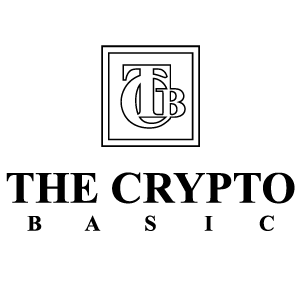South Korea Stablecoin Outlook: Bank of Korea Navigates Digital Payment Promise and Financial Risks
6 min read
BitcoinWorld South Korea Stablecoin Outlook: Bank of Korea Navigates Digital Payment Promise and Financial Risks The world of digital finance is buzzing with innovation, and at its heart are stablecoins – a revolutionary bridge between traditional currencies and the volatile crypto markets. These digital assets, designed to maintain a stable value, promise a new era for digital currency payment . Yet, as their adoption grows, so does scrutiny from global financial watchdogs. In South Korea , the central bank is taking a decidedly cautious approach, acknowledging the immense potential while flagging significant risks. This nuanced perspective from the Bank of Korea (BOK) highlights a crucial global dilemma: how to harness the benefits of innovation without compromising the bedrock of our financial systems. What are the Bank of Korea ‘s Core Concerns About Stablecoins? The Bank of Korea , South Korea’s central bank, has voiced clear reservations regarding the widespread adoption of stablecoins. Their recent report, cited by local outlet Herald Business, emphasizes that while stablecoins hold promise, their inherent risks cannot be overlooked. The BOK’s primary concern revolves around the potential for “coin runs”—a digital asset equivalent of traditional bank runs. Imagine a scenario where a large number of stablecoin holders simultaneously attempt to redeem their tokens for the underlying fiat currency or assets. If the issuer lacks sufficient liquid reserves, this could trigger a crisis of confidence, leading to a rapid devaluation and widespread panic. Beyond liquidity risks, the Bank of Korea also points to vulnerabilities within the operational and payment structures of stablecoins. These include: Operational Fragility: The systems supporting stablecoins, from smart contracts to redemption mechanisms, could be susceptible to technical glitches, cyberattacks, or mismanagement, potentially disrupting their peg to the underlying asset. Transparency Issues: A lack of clear, consistent, and independently verifiable audits of reserves can erode trust and make it difficult for regulators and users to assess the true backing of a stablecoin. Governance Challenges: Who controls the stablecoin’s issuance, redemption, and dispute resolution? Ambiguous governance structures can lead to instability and difficulty in crisis management. Interoperability Risks: As stablecoins integrate into various platforms and financial services, the complexity of their interactions could create new points of failure if not managed carefully. These concerns underscore the BOK’s commitment to safeguarding the financial system against unforeseen shocks, especially as novel digital assets gain traction. Why is Robust Stablecoin Regulation Crucial for Financial Stability ? The conversation around stablecoins isn’t just about their utility; it’s deeply intertwined with the broader concept of financial stability . For central banks like the Bank of Korea , ensuring the stability of the financial system is a core mandate. Unregulated or poorly regulated stablecoins, particularly those that achieve significant scale, could pose systemic risks. Think of it this way: if a major stablecoin were to collapse, the ripple effects could extend far beyond the crypto market, potentially impacting traditional banks, payment systems, and even the broader economy. Robust stablecoin regulation is not about stifling innovation; rather, it’s about creating a safe and predictable environment for it to flourish. Key aspects of effective regulation include: Reserve Requirements and Audits: Mandating that stablecoin issuers hold sufficient, high-quality, liquid reserves, and subjecting these reserves to regular, independent audits to ensure transparency and solvency. Consumer Protection: Establishing clear rules around disclosures, dispute resolution, and safeguarding user funds to protect consumers from fraud or insolvency. Anti-Money Laundering (AML) and Counter-Terrorism Financing (CTF): Ensuring stablecoin transactions adhere to global financial crime prevention standards. Interoperability and Settlement Standards: Developing guidelines for how stablecoins interact with existing payment infrastructures to minimize systemic risk. The BOK’s emphasis on minimizing risks to macroeconomic and monetary stability without stifling innovation highlights a delicate balancing act. The goal is to allow the benefits of stablecoins to emerge while mitigating the potential for them to destabilize the financial system, which is paramount for any responsible central bank. How Can Digital Currency Payment Systems Benefit from Stablecoins? Despite the cautious stance, the Bank of Korea readily acknowledges the immense promise stablecoins hold as a new form of digital currency payment . Their design—pegged to a stable asset like a fiat currency—eliminates the extreme volatility often associated with cryptocurrencies like Bitcoin or Ethereum, making them far more practical for everyday transactions and financial services. The potential benefits for digital payment systems are compelling: Faster and Cheaper Transactions: Stablecoins can facilitate near-instantaneous and low-cost transfers, especially across borders, bypassing traditional banking intermediaries and their associated fees and delays. Financial Inclusion: For the unbanked or underbanked populations, stablecoins could offer access to digital financial services, allowing them to participate more fully in the global economy. Enhanced Programmability: Stablecoins, being built on blockchain technology, can be programmed to execute payments automatically based on predefined conditions (e.g., smart contracts), opening doors for innovative financial products and services. Cross-Border Commerce: Streamlining international trade and remittances by reducing friction and costs, making global transactions more efficient. Consider a simple comparison: Feature Traditional Cross-Border Payment Stablecoin Payment Speed Days Minutes/Seconds Cost High fees (interbank, FX) Low network fees Accessibility Requires bank account Internet connection & wallet This illustrates why the potential of stablecoins to revolutionize how we transfer value is so compelling, making them a significant area of focus for central banks and innovators alike. The Path Forward for South Korea Stablecoin Adoption: Bank-Led Integration and Prudent Frameworks Given both the promise and the peril, what is the recommended path forward for South Korea stablecoin adoption? The Bank of Korea has put forth a strategic recommendation: their initial integration into the financial system should be led by established banks with robust infrastructure. This approach is rooted in practical considerations for containing systemic risks. Banks already possess: Existing Regulatory Compliance: Banks operate under stringent regulatory frameworks, including capital requirements, risk management protocols, and consumer protection laws. This provides a pre-existing safety net. Established Infrastructure: They have the operational backbone, cybersecurity measures, and large-scale payment processing capabilities necessary to handle digital assets securely and efficiently. Public Trust: Traditional financial institutions generally command a higher level of public trust compared to nascent crypto entities, which can ease the public’s adoption of stablecoin-based services. Risk Management Expertise: Banks have decades of experience in managing liquidity, credit, and operational risks, which can be adapted to the unique challenges of stablecoins. By entrusting banks with this initial phase, the BOK aims to create a controlled environment where the benefits of stablecoin technology can be explored and realized, while simultaneously containing potential systemic shocks. This measured approach ensures that innovation doesn’t outpace the ability to manage its consequences. Furthermore, the report emphasizes the ongoing need for dynamic regulatory frameworks. These frameworks must be flexible enough to adapt to the rapidly evolving crypto space, minimizing risks to macroeconomic and monetary stability without stifling the very innovation that promises to enhance digital currency payment systems. Conclusion: Navigating the Future of Digital Finance with Prudence The Bank of Korea ‘s stance on stablecoins reflects a global trend: a cautious yet open-minded approach to digital assets. While the promise of enhanced digital currency payment systems is clear, the imperative for robust stablecoin regulation to protect financial stability remains paramount. As South Korea stablecoin discussions evolve, the focus will undoubtedly remain on striking this delicate balance, ensuring that innovation serves the broader economic good without introducing undue risk. The BOK’s recommendations offer a pragmatic roadmap for integrating stablecoins into the mainstream financial system, prioritizing security and stability while still embracing the transformative potential of digital currencies. To learn more about the latest crypto market trends, explore our article on key developments shaping digital currency payment institutional adoption. This post South Korea Stablecoin Outlook: Bank of Korea Navigates Digital Payment Promise and Financial Risks first appeared on BitcoinWorld and is written by Editorial Team

Source: Bitcoin World



